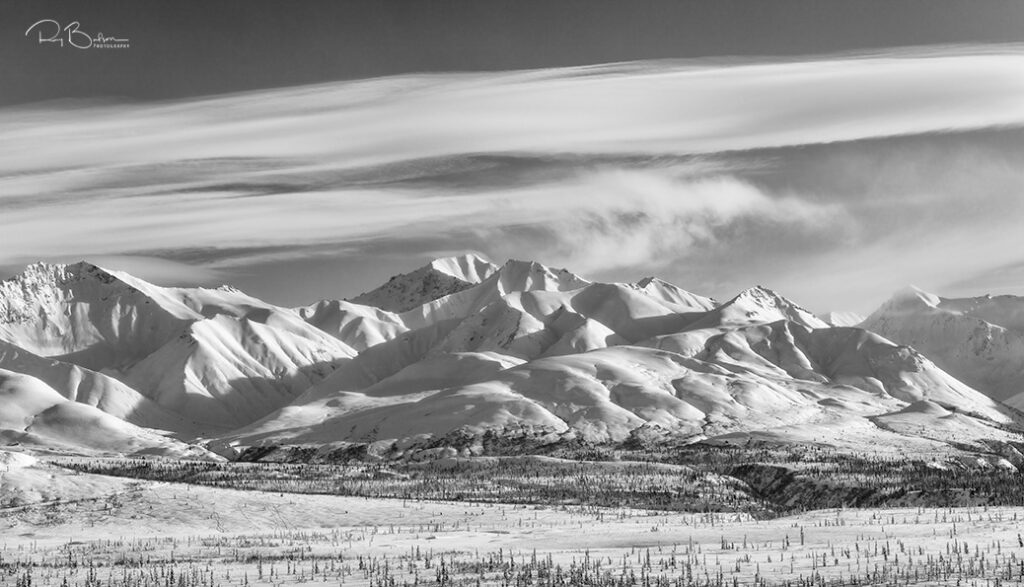
You need light to photograph, but without shadows your photos will not have any depth. Subjects will lack texture and form and appear flat. While this may seem to be counter-intuitive for a two-dimensional art form such as photography, there is a way to bring depth to our photos.
In the ambient light of the outdoors, directional lighting from the sun, especially side-lighting, produces shadows. The interplay of light and shadows was the basis for the concept of chiaroscuro — Italian for light-dark — that was used effectively by Renaissance master painters like Rembrandt, Caravaggio, Ruebens and others. They transformed painting by modeling light to lift their subjects off of the two-dimensional canvas into three-dimensional space. It brought a level of realism to painting that is exceeded today only by photography.
In this winter photo of the Chugach Mountains in Southcentral Alaska, the side-lighting created a mosaic of shadows and highlights that gave form to the mountains. The mountains here look like they are clay molded by hand; they have “volume” and stand out in 3-D relief against the sky. The light and shadow bring out the details of the landforms you would not see if it were front-lit.


